What is a Dredge Operator?
Job Description: Operate dredge to remove sand, gravel, or other materials in order to excavate and maintain navigable channels in waterways.
Life As a Dredge Operator
- Direct or assist workers placing shore anchors and cables, laying additional pipes from dredges to shore, and pumping water from pontoons.
- Pump water to clear machinery pipelines.
- Start power winches that draw in or let out cables to change positions of dredges, or pull in and let out cables manually.
- Lower anchor poles to verify depths of excavations, using winches, or scan depth gauges to determine depths of excavations.
- Start and stop engines to operate equipment.
- Move levers to position dredges for excavation, to engage hydraulic pumps, to raise and lower suction booms, and to control rotation of cutterheads.
Featured schools near , edit
What a Dredge Operator Should Know
Below is a list of the skills most Dredge Operators say are important on the job.
Operation and Control: Controlling operations of equipment or systems.
Operation Monitoring: Watching gauges, dials, or other indicators to make sure a machine is working properly.
Judgment and Decision Making: Considering the relative costs and benefits of potential actions to choose the most appropriate one.
Coordination: Adjusting actions in relation to others’ actions.
Critical Thinking: Using logic and reasoning to identify the strengths and weaknesses of alternative solutions, conclusions or approaches to problems.
Troubleshooting: Determining causes of operating errors and deciding what to do about it.
Other Dredge Operator Job Titles
- Dredge Mate
- Dredge Captain
- Dredge Worker
- Dredge Operator
- Dredge Hand
Job Opportunities for Dredge Operators
There were about 1,800 jobs for Dredge Operator in 2016 (in the United States). New jobs are being produced at a rate of 5.6% which is above the national average. The Bureau of Labor Statistics predicts 100 new jobs for Dredge Operator by 2026. Due to new job openings and attrition, there will be an average of 200 job openings in this field each year.
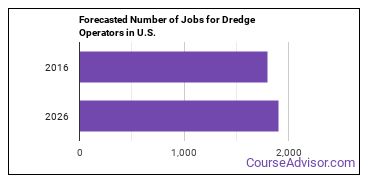
The states with the most job growth for Dredge Operator are Florida, South Carolina, and Missouri. Watch out if you plan on working in Tennessee, Ohio, or North Carolina. These states have the worst job growth for this type of profession.
What is the Average Salary of a Dredge Operator
Dredge Operators make between $30,760 and $66,040 a year.

Dredge Operators who work in California, Indiana, or South Carolina, make the highest salaries.
Below is a list of the median annual salaries for Dredge Operators in different U.S. states.
| State | Annual Mean Salary |
|---|---|
| California | $62,270 |
| Florida | $46,050 |
| Indiana | $49,510 |
| Iowa | $42,600 |
| Louisiana | $46,670 |
| Maryland | $46,160 |
| Missouri | $47,750 |
| Nebraska | $34,410 |
| Ohio | $41,610 |
| Oklahoma | $40,300 |
| Pennsylvania | $41,980 |
| South Carolina | $53,800 |
| Texas | $44,120 |
What Tools do Dredge Operators Use?
Below is a list of the types of tools and technologies that Dredge Operators may use on a daily basis:
- Web browser software
- Data entry software
- Global positioning system GPS software
- Programmable logic controller PLC software
- Trimble HYDROpro
Becoming a Dredge Operator
Learn what Dredge Operator education requirements there are.
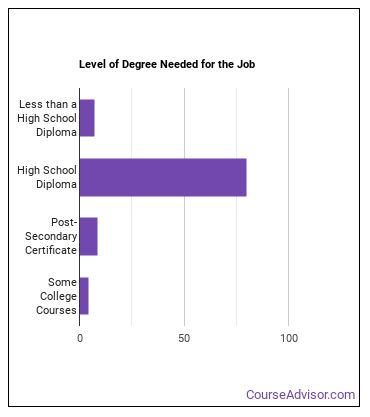
How many years of work experience do I need?
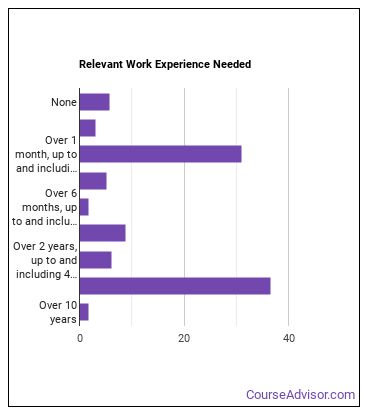
Who Employs Dredge Operators?
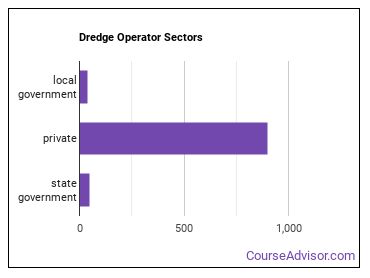
The table below shows the approximate number of Dredge Operators employed by various industries.
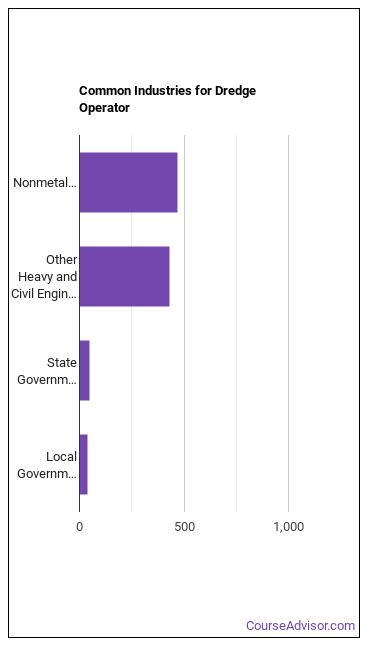
Similar Careers
Those thinking about becoming a Dredge Operator might also be interested in the following careers:
Are you already one of the many Dredge Operator in the United States? If you’re thinking about changing careers, these fields are worth exploring:
References:
Image Credit: Hic85 via Public Domain
More about our data sources and methodologies.
Featured Schools
 Request Info
Request Info
|
Southern New Hampshire University You have goals. Southern New Hampshire University can help you get there. Whether you need a bachelor's degree to get into a career or want a master's degree to move up in your current career, SNHU has an online program for you. Find your degree from over 200 online programs. Learn More > |
